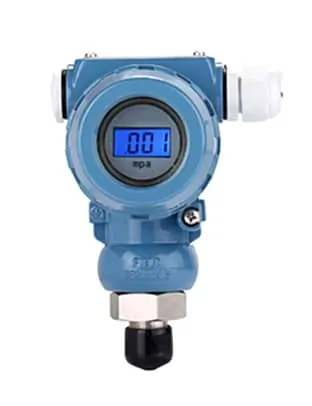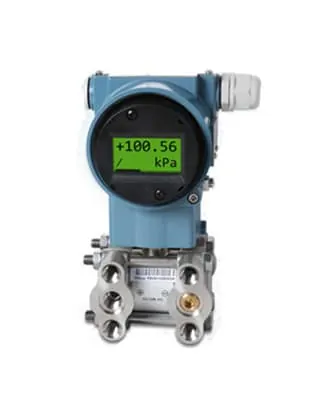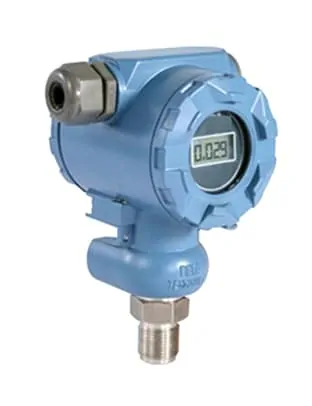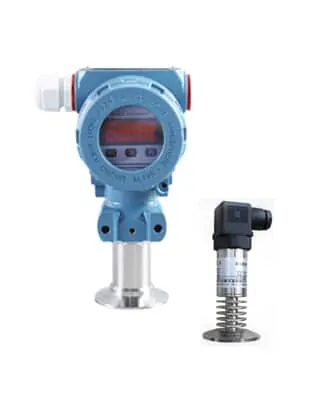Understanding common units of pressure is crucial in various fields, such as chemistry, physics, and engineering. Pressure is a fundamental concept that plays a vital role in processes involving gas, vacuum, and fluid systems. With numerous units available, such as Pascal (Pa), millimeters of mercury (mmHg), pound per square inch (psi), and torr, it’s essential to know their conversion relationships.
In this guide, we will explore the most commonly used pressure measurement units and their conversion relationships, making it easier for you to convert values across different applications.
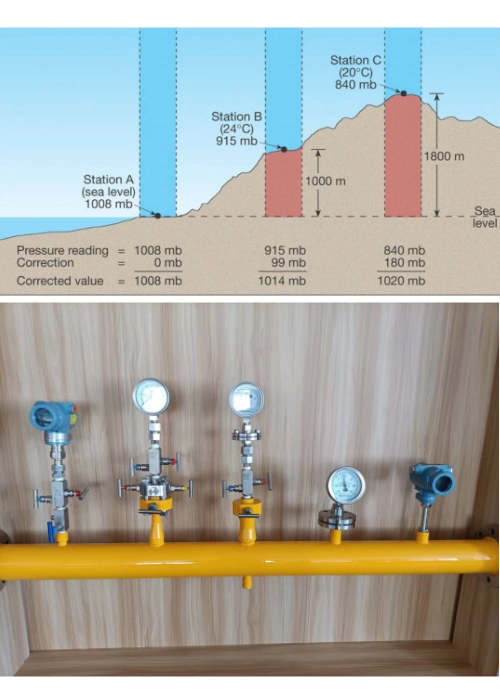
Common Units of Pressure
The SI Unit for Pressure: The Pascal
The Pascal (Pa) is the SI (International System of Units) unit for pressure, named after the French mathematician and physicist Blaise Pascal.
One Pascal is defined as the pressure of one newton per square meter (N/m²).
It represents the force applied uniformly over a unit area, making it an essential unit for quantifying pressure in various scientific and engineering applications.
Exploring Non-SI Units of Pressure
Conversion Relationships Between Pressure Units
Pascal to PSI Conversion
To convert pressure values from Pascals (Pa) to pounds per square inch (PSI), you can use the following formula:
1 Pa = 0.0001450377377 PSI
To convert from Pascals to PSI, simply multiply the pressure value in Pascals by the conversion factor:
Pressure (PSI) = Pressure (Pa) × 0.0001450377377
Bar to PSI Conversion
To convert pressure values from bars to PSI, you can use the following formula:
1 bar = 14.503773773 PSI
To convert from bars to PSI, simply multiply the pressure value in bars by the conversion factor:
Pressure (PSI) = Pressure (bars) × 14.503773773
Atmospheres to Pascal Conversion
To convert pressure values from atmospheres (atm) to Pascals (Pa), you can use the following formula:
1 atm = 101,325 Pa
To convert from atmospheres to Pascals, simply multiply the pressure value in atmospheres by the conversion factor:
Pressure (Pa) = Pressure (atm) × 101,325
Inches of Mercury to Millimeters of Mercury Conversion
To convert pressure values from inches of mercury (inHg) to millimeters of mercury (mmHg), you can use the following formula:
1 inHg = 25.4 mmHg
To convert from inches of mercury to millimeters of mercury, simply multiply the pressure value in inches of mercury by the conversion factor:
Pressure (mmHg) = Pressure (inHg) × 25.4
Inches of Water Column to PSI Conversion
To convert pressure values from inches of water column (inWC) to pounds per square inch (PSI), you can use the following formula:
1 inWC = 0.0361272918 PSI
To convert from inches of water column to PSI, simply multiply the pressure value in inches of water column by the conversion factor:
Pressure (PSI) = Pressure (inWC) × 0.0361272918
Extended reading: what is a pressure transducer?
pressure conversion chart
| Pressure Unit | Abbr. | psi | atm | inH2O | cmH2O | kg/cm² | mmHg | cmHg | mbar | Pa | kPa | MPa |
| Pounds per Square Inch | psi | 1 | 0.068 | 27.68 | 70.31 | 0.07031 | 51.71 | 5.171 | 68.95 | 6895 | 6.895 | 0.006895 |
| Atmospheres | atm | 14.7 | 1 | 406.8 | 1033.29 | 1.0332 | 760 | 76 | 1013.25 | 101325 | 101.325 | 0.101325 |
| Inches of Water | inH2O | 0.0361 | 0.00254 | 1 | 2.54 | 0.00254 | 1.868 | 0.1868 | 2.491 | 249.1 | 0.2491 | 0.0002491 |
| Centimeters of Water | cmH2O | 0.01422 | 0.001 | 0.3937 | 1 | 0.001 | 0.7353 | 0.07353 | 0.9807 | 98.07 | 0.09807 | 0.00009807 |
| Kilograms per Square Centimeter | kg/cm² | 14.223 | 0.9678 | 393.7 | 1000 | 1 | 735.6 | 73.56 | 980.7 | 98000 | 98 | 0.098 |
| Millimeters of Mercury (Torr) | mmHg | 0.01934 | 0.001316 | 0.5353 | 1.36 | 0.00136 | 1 | 0.1 | 1.333 | 133.3 | 0.1333 | 0.0001333 |
| Centimeters of Mercury | cmHg | 0.1934 | 0.01316 | 5.353 | 13.6 | 0.0136 | 10 | 1 | 13.33 | 1333 | 1.333 | 0.001333 |
| Millibar | mbar | 0.0145 | 0.0009869 | 0.4015 | 1.0197 | 0.00102 | 0.7501 | 0.07501 | 1 | 100 | 0.1 | 0.0001 |
Read more about: Absolute Pressure Vs Gauge Pressure Measuring Instruments
Conversion Examples and Calculations
Here are three examples of converting pressure units using the pressure conversion chart provided earlier:
Example 1: Converting 0.5 PSI to Inches Water Column
From the table, we know that 1 PSI = 27.7076 inH₂O. To convert 0.5 PSI to inches of water column, we can use the following equation:
0.5 PSI * (27.7076 inH₂O / 1 PSI) = 13.8538 inH₂O
So, 0.5 PSI is approximately equal to 13.8538 inches of water column.
Example 2: Converting 100 kPa to Bar
From the table, we know that 1 kPa = 0.01 Bar. To convert 100 kPa to Bar, we can use the following equation:
100 kPa * (0.01 Bar / 1 kPa) = 1 Bar
So, 100 kPa is equal to 1 Bar.
Example 3: Converting 760 Torr to Atmospheres
From the table, we know that 1 atm = 760 Torr. To convert 760 Torr to atmospheres, we can use the following equation:
760 Torr * (1 atm / 760 Torr) = 1 atm
So, 760 Torr is equal to 1 atmosphere.
Frequently
Asked
Questions
More Pressure Measurement Solutions
Small Pressure Transducer/Sensor-Low Cost-High Performance
What’s the Difference Between a Pressure Transducer and a Pressure Switch?
What Is Flush Diaphragm Pressure Transducer? When Use?
Natural Gas Pipeline Monitoring: Pressure-Temperature-Flow
Different Types of Pressure: Absolute, Gauge, Sealed Gauge and Differential Pressure
Static Pressure Sensor and Transmitter Features and Applications
In conclusion, understanding the Common Units of Pressure measurement and their conversion relationships is essential in many fields, including engineering, science, and industry. This knowledge helps to ensure accurate and consistent measurements across different systems and applications. The SI unit for pressure is the Pascal, but other common units include PSI, atmospheres, inches and millimeters of mercury, inches and millimeters of water column, and Torr.
By using the provided Common Units of Pressure conversion chart and conversion examples, you can easily convert between different pressure units. Remember that some units are more common in specific industries, so it’s crucial to choose the right unit for your application.
If you require high-quality pressure measuring instruments, we recommend Sino-Inst. As a professional supplier with extensive experience in the field, Sino-Inst offers a wide range of pressure measurement devices suitable for various industries and applications.Don’t hesitate to contact our knowledgeable team for any questions or assistance in selecting the right instrument for your application. Let Sino-Inst be your trusted partner in achieving accurate and reliable pressure measurements.
Request a Quote

Wu Peng, born in 1980, is a highly respected and accomplished male engineer with extensive experience in the field of automation. With over 20 years of industry experience, Wu has made significant contributions to both academia and engineering projects.
Throughout his career, Wu Peng has participated in numerous national and international engineering projects. Some of his most notable projects include the development of an intelligent control system for oil refineries, the design of a cutting-edge distributed control system for petrochemical plants, and the optimization of control algorithms for natural gas pipelines.

